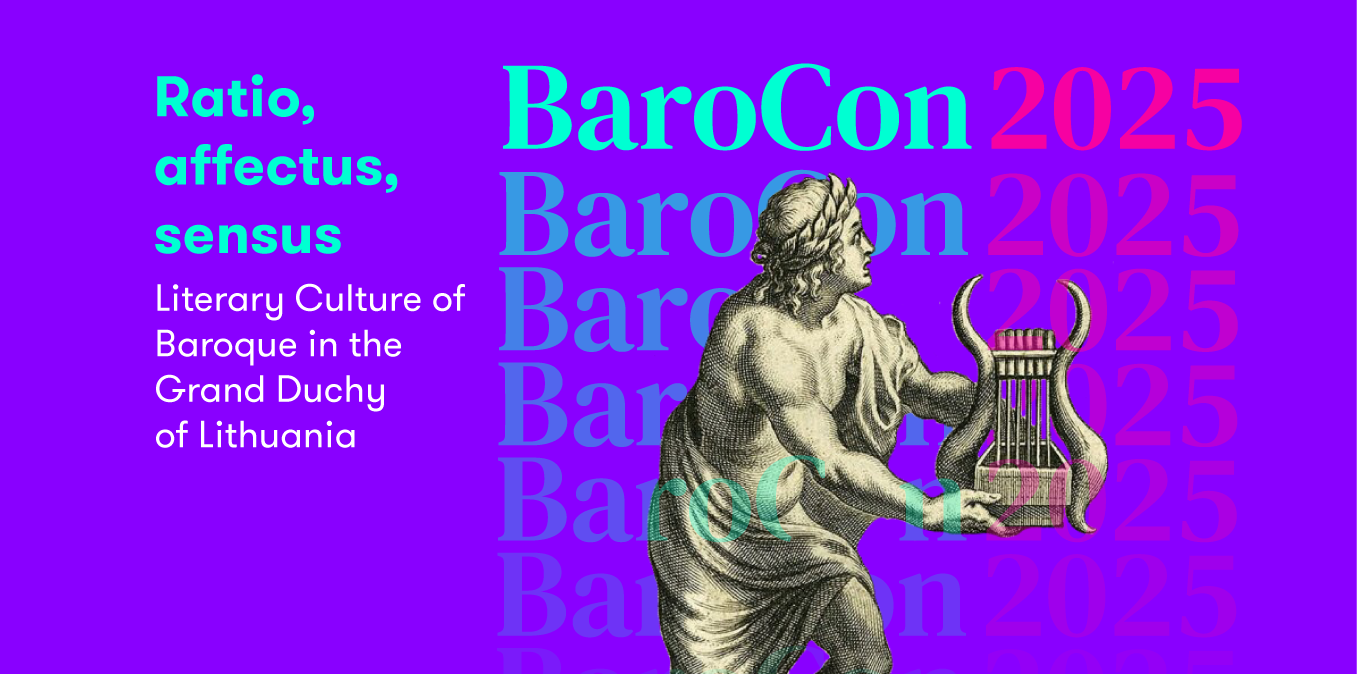Ratio, affectus, sensus: Literary Culture of the Baroque in the Grand Duchy of Lithuania
In 2025, we will commemorate the 400th anniversary of the first publication of Matheus Casimirus Sarbievius' most famous Latin poetry collection 'Lyricorum libri tres' (1625). This has led to 2025 being declared the Year of Baroque Literature in Lithuania. The eminent Jesuit neo-Latin poet of the Polish-Lithuanian Commonwealth, Sarbievius, has been hailed as the Christian Horace and the Sarmatian Horace. His theoretical thoughts on poetry and rhetoric are still highly regarded and have inspired new research on other concurrent themes and authors. This anniversary provides an opportunity to explore the extent and diversity of Baroque literary culture, which has seen a surge of interest in recent decades, both in the academic world and in popular culture. Therefore, the Institute of Lithuanian Literature and Folklore, together with the Faculty of Philology of Vilnius University, is organising an international academic conference "Ratio, affectus, sensus: Literary Culture of the Baroque in the Grand Duchy of Lithuania" on 25-27 September 2025 in the baroque city of Vilnius.
The aim of the multidisciplinary conference is to stimulate discussion on the literary culture of the "long seventeenth century" (from the end of the 16th century to the middle of the 18th century) in the Grand Duchy of Lithuania. This historical period, associated with dramatic changes and a general cultural crisis, is often described in contradictory terms and in constant tension between reason and senses, rigid structure and passions, classifications and impressions, etc. By embracing this contradiction, we invite an exploration of the theme in question through the lens of this dynamic interplay between reason (ratio), emotion (affectus) and the senses (sensus), which can be perceived in various genres of the period, such as poetry, biography, hagiography, rhetoric, private and public correspondence, and so on. The importance of the modern approach lies not only in what it can reveal about the Baroque in the Grand Duchy of Lithuania, but also about subsequent and contemporary literary culture, as scholars have demonstrated the continuing influence of a 'Baroque spirit'.
Event location
25–26 September the conference will take place at V. Krėvė (118) auditorium, Faculty of Philology
27 September the conference will take place at the Church Heritage Museum, Šv. Mykolo g. 9 (entrance from Maironio g. "Arkangelo konferencijų centras")
Keynote speakers

Ona Dilytė-Čiurinskienė
Senior Researcher, The Institute of Lithuanian Literature and Folklore
Prof Stephen Harrison
Professor of Latin literature, University of Oxford
Olena Kurhanova
The Vilnius 'Sluzhebnyk' Edition of 1692 as a Monument of Baroque Book Culture
Olena Kurhanova
V. I. Vernadky National library of Ukraine
The Vilnius Sluzhebnyk Edition of 1692 as a Monument of Baroque Book Culture
Keywords: Vilnius Basilian Printing House, Baroque book culture, Cyrillic liturgical printing, patronage in book decoration, Baroque rhetoric, Karl Stanislaw Radziwiłł, Leon Tarasevych, Leon Tarasevych, 17th-century liturgical books
The Sluzhebnyk edition of 1692, published by the Vilnius Basilian Printing House, is a unique example of Baroque-era Cyrillic liturgical printing. Distinguished by its artistic and editorial design, it features elements uncommon in similar church editions of the Orthodox and Greek-Catholic publishing traditions. A key highlight is the portrait of patron Karl Stanislaw Radziwiłł, masterfully engraved by Leon Tarasevych. This portrait, accompanied by a heraldic poem and a dedicatory text, exemplifies Baroque portraiture and enriches the broader Baroque tradition of representing patrons in book decoration—where portraits were typically omitted, leaving only heraldic poems. Baroque rhetorical influence is also evident in a prefatory text by Metropolitan Kiprian Zohovsky, where the Sluzhebnyk is metaphorically depicted as both a divine sacrifice and a grateful offering to the patron. This prefatory text praises the virtues of Karl Stanislaw and his ancestors, emphasizing their support for ecclesiastical institutions, including the Basilian Church in the Polish-Lithuanian Commonwealth. Such dedications, focusing on patrons' contributions to church life, are a common structural feature in ecclesiastical book publishing. Additionally, the preface employs Baroque rhetorical strategies to emphasize the Sluzhebnyk’s relevance in the liturgical and interfaith discourse of the late 17th century. Thus, the Vilnius Sluzhebnyk of 1692 stands as a remarkable yet integral part of the rich tradition of Baroque Cyrillic liturgical book culture.


